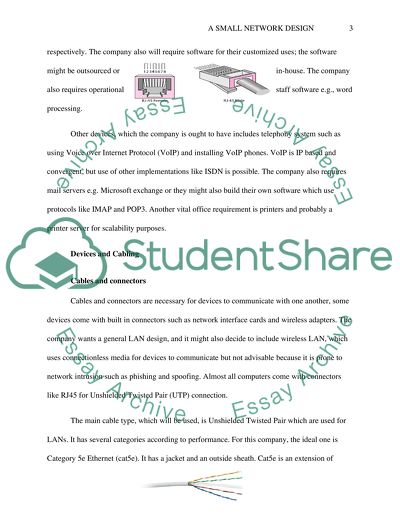Cite this document
(“A Small Network Design Essay Example | Topics and Well Written Essays - 2000 words”, n.d.)
Retrieved from https://studentshare.org/information-technology/1450260-a-small-network-design
Retrieved from https://studentshare.org/information-technology/1450260-a-small-network-design
(A Small Network Design Essay Example | Topics and Well Written Essays - 2000 Words)
https://studentshare.org/information-technology/1450260-a-small-network-design.
https://studentshare.org/information-technology/1450260-a-small-network-design.
“A Small Network Design Essay Example | Topics and Well Written Essays - 2000 Words”, n.d. https://studentshare.org/information-technology/1450260-a-small-network-design.


